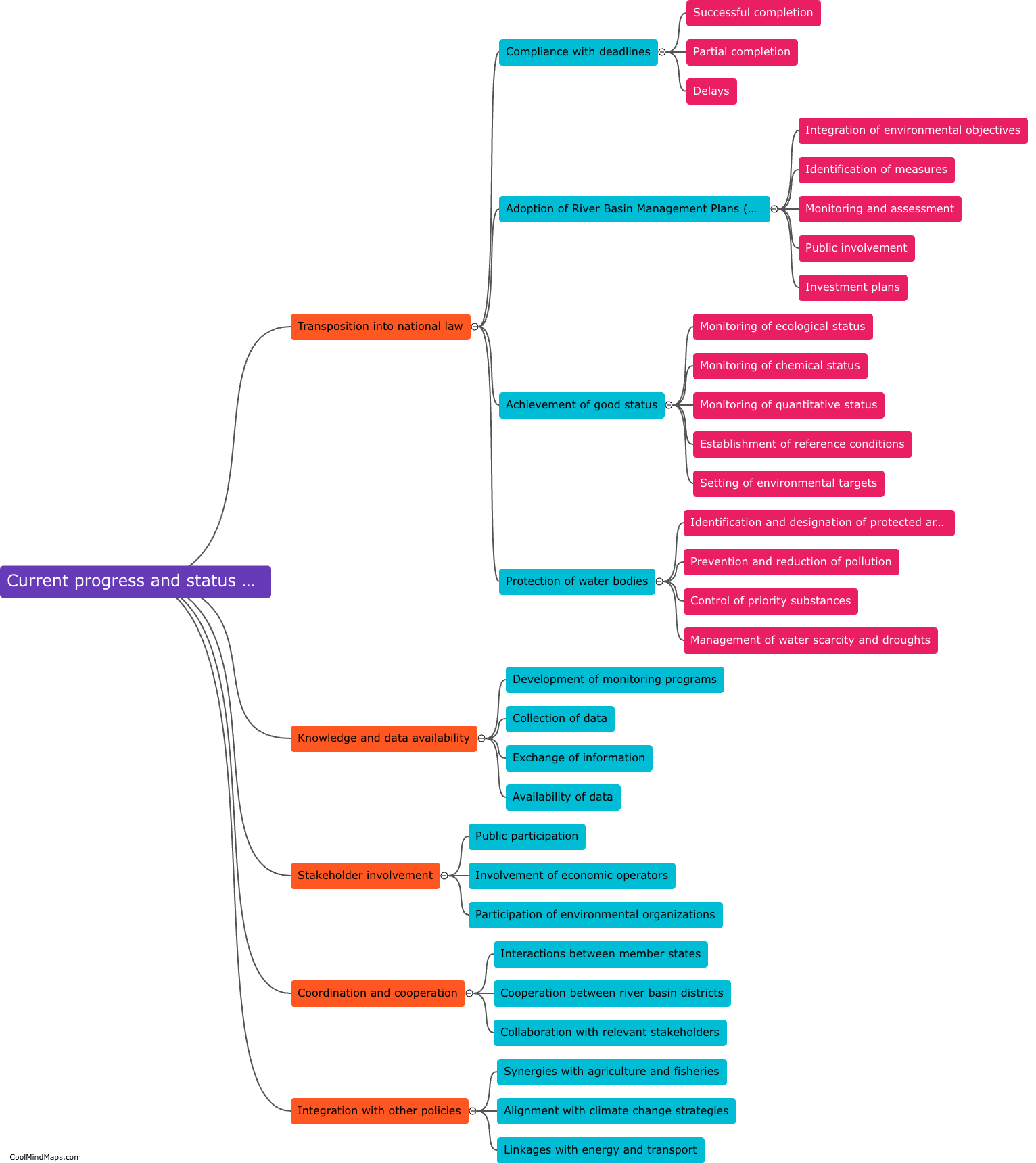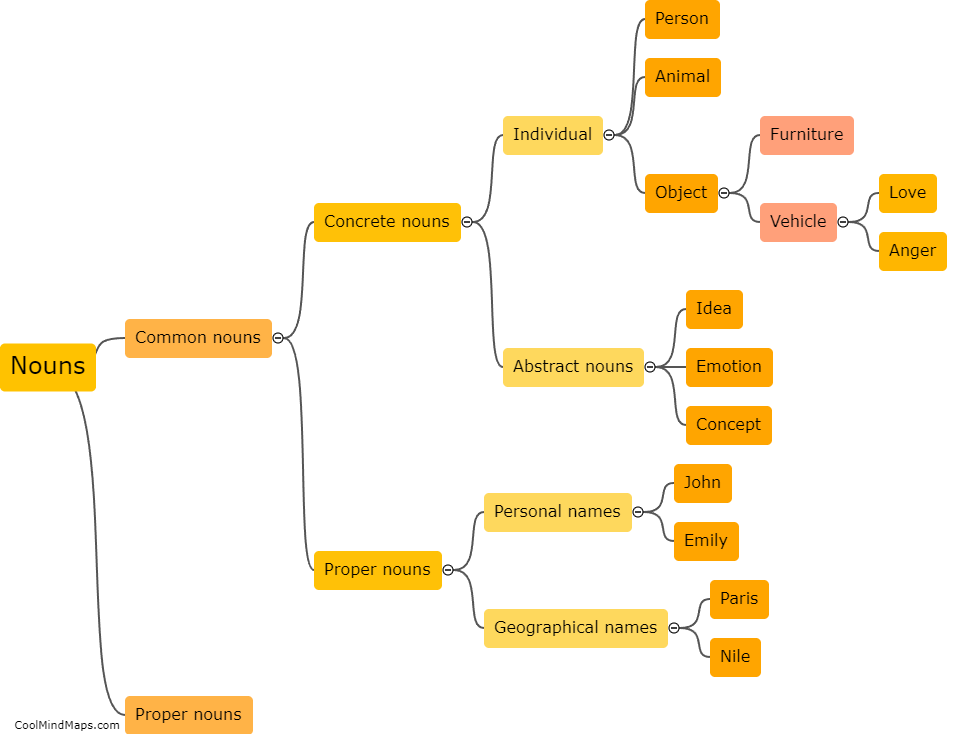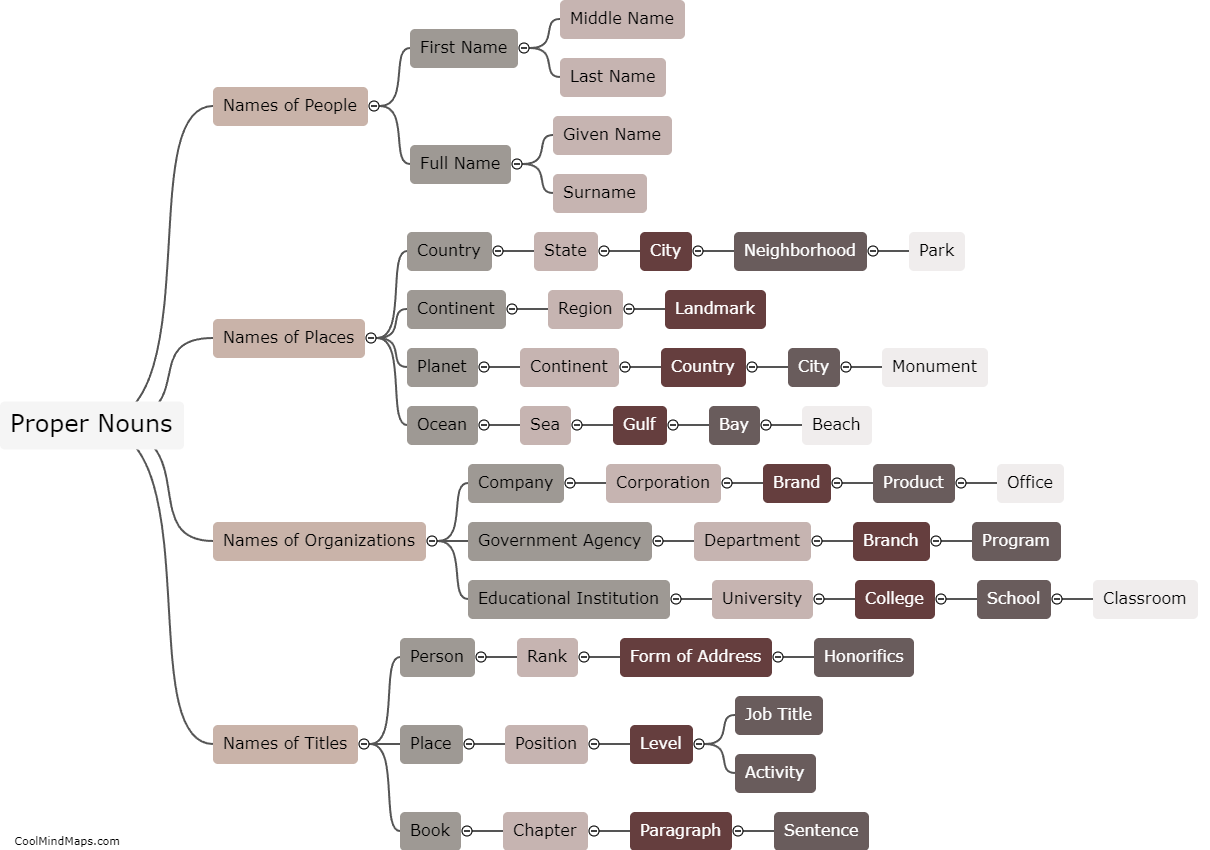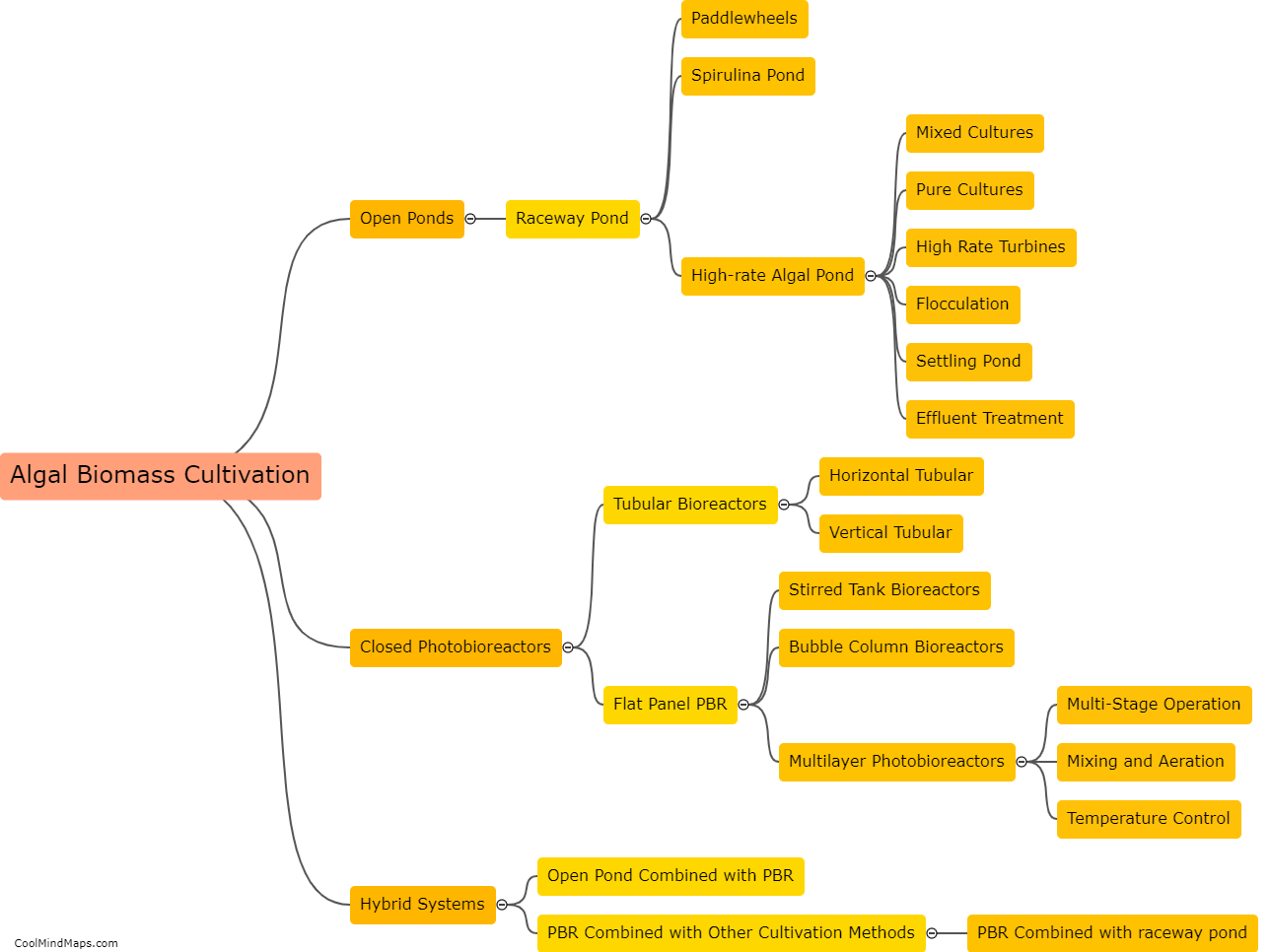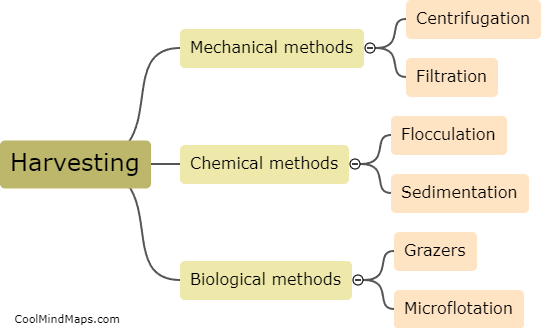How can algal biomass be used for bioenergy production?
Algal biomass has gained significant attention as a promising feedstock for bioenergy production due to its high growth rate, efficient carbon dioxide (CO2) fixation, and ability to produce various types of biofuels. To utilize algal biomass for bioenergy, several cultivation systems are utilized, including open ponds, closed photobioreactors, and raceway ponds. These systems provide optimal conditions for algae growth and biomass accumulation. The harvested algal biomass can then be processed through different conversion methods, such as anaerobic digestion, pyrolysis, or fermentation, to obtain bioenergy products like biogas, bio-oil, or bioethanol. Additionally, algal biomass can be directly used as a substitute for coal in power generation, producing bioelectricity. The ability of algae to grow on non-arable land and consume CO2 from various sources further enhances their potential as a sustainable and renewable source of bioenergy.
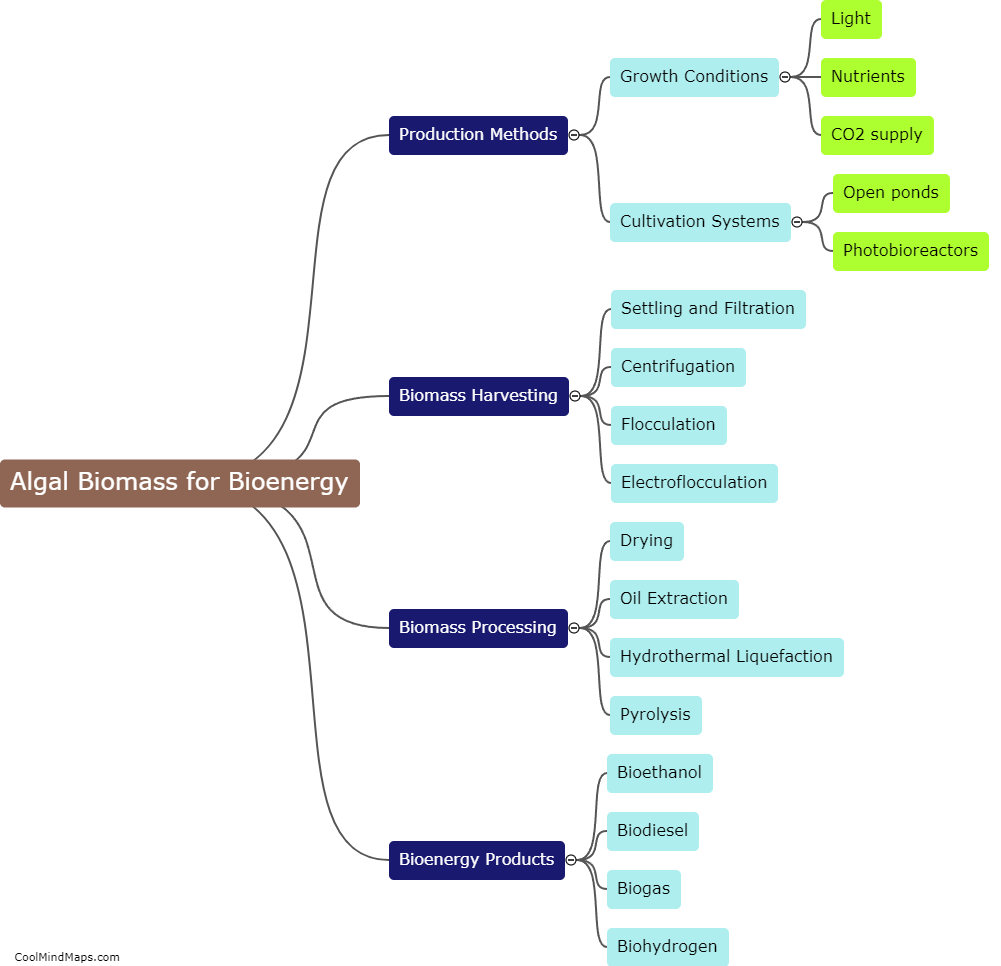
This mind map was published on 17 October 2023 and has been viewed 47 times.

